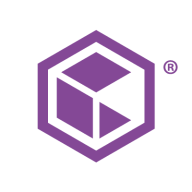

Commvault Cloud and NetApp Cloud Volumes ONTAP compete in the cloud data management solutions category. NetApp may have the edge due to its ease of integration in hybrid cloud environments and strong backup capabilities.
Features: Commvault Cloud excels with seamless public cloud integration, effective deduplication methods, and cost savings based on capacity. It also offers automation and centralized management, boosting operational efficiency across cloud and on-premises environments. NetApp Cloud Volumes ONTAP provides robust storage management, flexible file sharing, and efficient snapshot and cloning features, which are especially beneficial for hybrid cloud deployments.
Room for Improvement: Commvault Cloud could enhance its user interface and expand integration with new technologies, alongside improving update processes and support reliability. NetApp Cloud Volumes ONTAP could broaden its cloud integration capabilities, enhance support for multi-region deployments, and improve snapshot management and cost optimization features.
Ease of Deployment and Customer Service: Commvault Cloud adapts well to on-premises, hybrid, and public cloud environments, and receives high customer service ratings due to its quick and effective support. NetApp Cloud Volumes ONTAP simplifies storage management in cloud settings, but its setup can be complex. Although customer service is responsive for both, local support could be improved for NetApp.
Pricing and ROI: Commvault Cloud offers competitive pricing with a flexible licensing model, suitable for various organizational needs. While initial costs are high, many users report strong ROI from operational efficiencies. NetApp Cloud Volumes ONTAP’s pricing reflects its comprehensive features and is perceived as higher than competitors, yet justified by its performance and stability. Both products significantly enhance data management efficiency, though NetApp's licensing could be more flexible to accommodate dynamic workloads.


Commvault Cloud is the ultimate cyber resilience platform built to meet the demands of the hybrid
enterprise. Beyond its core functionality of data backup and recovery across diverse workloads, including applications, databases, virtual machines, and files, Commvault Cloud stands out as a robust defense against ransomware. Going beyond backup, the platform integrates advanced data security features such as encryption, access control, and threat detection, safeguarding against unauthorized access and cyber threats.
With tools for data management, classification, and migration, businesses can optimize storage costs, enhance accessibility, and comply with regulations seamlessly. Boasting cloud integration with major providers like AWS, Azure, and Google Cloud, Commvault Cloud leverages the scalability and flexibility of the cloud for comprehensive data protection and management. The platform's automation capabilities streamline tasks, and its reporting and analytics features provide valuable insights into data usage, potential risks, and optimization strategies. Commvault Cloud is not just a security tool; it is a key component of cyber resilience, enabling organizations to not only protect against cyberattacks but also recover swiftly and minimize the impact of incidents. Elevate your cyber resilience strategy with Commvault Cloud.
NetApp Cloud Volumes ONTAP is an efficient storage management solution for managing and storing data in the cloud. It offers seamless integration with cloud providers, advanced data replication capabilities, and high data protection. With reliable performance, it is ideal for industries like healthcare and finance.
We monitor all Cloud Backup reviews to prevent fraudulent reviews and keep review quality high. We do not post reviews by company employees or direct competitors. We validate each review for authenticity via cross-reference with LinkedIn, and personal follow-up with the reviewer when necessary.